
Gracillariidae is an important family of insects in the order Lepidoptera and the principal family of leaf miners that includes several economic, horticultural or recently invasive pest species such as the horse-chestnut leaf miner, Cameraria ohridella.
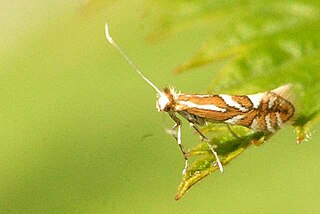
Phyllonorycter oxyacanthae is a moth of the family Gracillariidae found in all of Europe except the Balkan Peninsula. It was described by the German-born Swiss entomologist, Heinrich Frey in 1856. The larvae are known as leaf miners, living inside the leaves of their food plants.

Phyllonorycter apparella, the aspen leaf blotch miner moth, is a moth of the family Gracillariidae. It is found in most of Europe. It is also present in Turkey and North America.
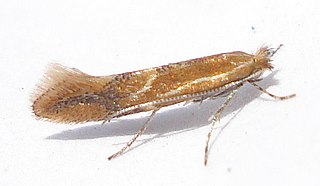
Phyllonorycter is a genus of moths in the family Gracillariidae.
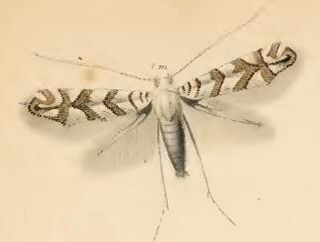
Phyllonorycter acerifoliella is a moth of the family Gracillariidae. It is found from Sweden to the Pyrenees, Italy, Albania and Bulgaria, and from Great Britain to southern Russia.

Phyllonorycter esperella is a moth of the family Gracillariidae. It is found from Sweden to the Pyrenees, Italy and Greece and from Great Britain to Ukraine.

Phyllonorycter froelichiella is a moth of the family Gracillariidae. It is found in all of Europe, except Greece.
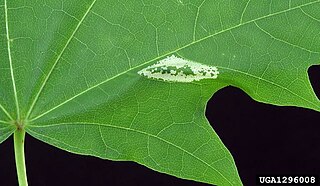
Phyllonorycter joannisi is a moth of the family Gracillariidae. It is found in most of Europe.

Phyllonorycter tristrigella is a moth of the family Gracillariidae. It is known from all of Europe, except the Iberian Peninsula and the Balkan Peninsula, east to the European part of Russia. It was also recorded from Japan, but this is a misidentification of Phyllonorycter laciniatae.

Phyllonorycter strigulatella is a moth of the family Gracillariidae. It is found in the most of Europe, east to Russia and Japan.

Phyllonorycter stettinensis is a moth of the family Gracillariidae. It is found from Scandinavia and Finland to the Pyrenees, Corsica, Italy and Bulgaria and from Great Britain to Russia.

Phyllonorycter geniculella is a moth of the family Gracillariidae. It is found from Sweden to the Pyrenees, Italy and Bulgaria and from Great Britain to southern Russia.

Phyllonorycter hilarella is a moth of the family Gracillariidae. It is found in all of Europe, except the Balkan Peninsula and the Mediterranean Islands.
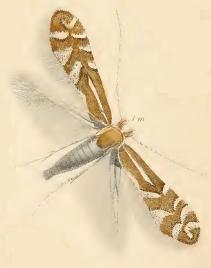
Phyllonorycter lantanella is a moth of the family Gracillariidae. It is found in all of Europe, except Scandinavia, Ireland and the Balkan Peninsula.

Phyllonorycter quercifoliella is a moth of the family Gracillariidae. It is known from all of Europe, except for the Mediterranean islands.
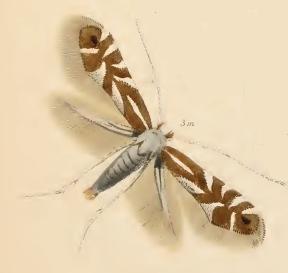
Phyllonorycter rajella is a moth of the family Gracillariidae. It is known from all of Europe, except the Iberian Peninsula and Greece.
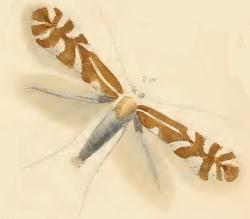
Phyllonorycter salicicolella is a moth of the family Gracillariidae. It is known from all of Europe, east to Russia and Japan.
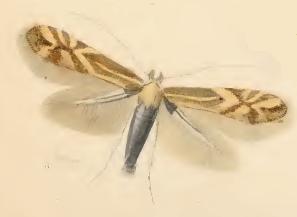
Phyllonorycter salictella is a moth of the family Gracillariidae. It is known from all of Europe, east to Russia and Japan.

Phyllonorycter schreberella is a moth of the family Gracillariidae. It is known from Europe, except northern Europe, Ireland and the Balkan Peninsula.

Phyllonorycter spinicolella, also known as the sloe midget, is a moth of the family Gracillariidae, first described by the German entomologist Philipp Christoph Zeller in 1846. It is probably present in all of Europe.












